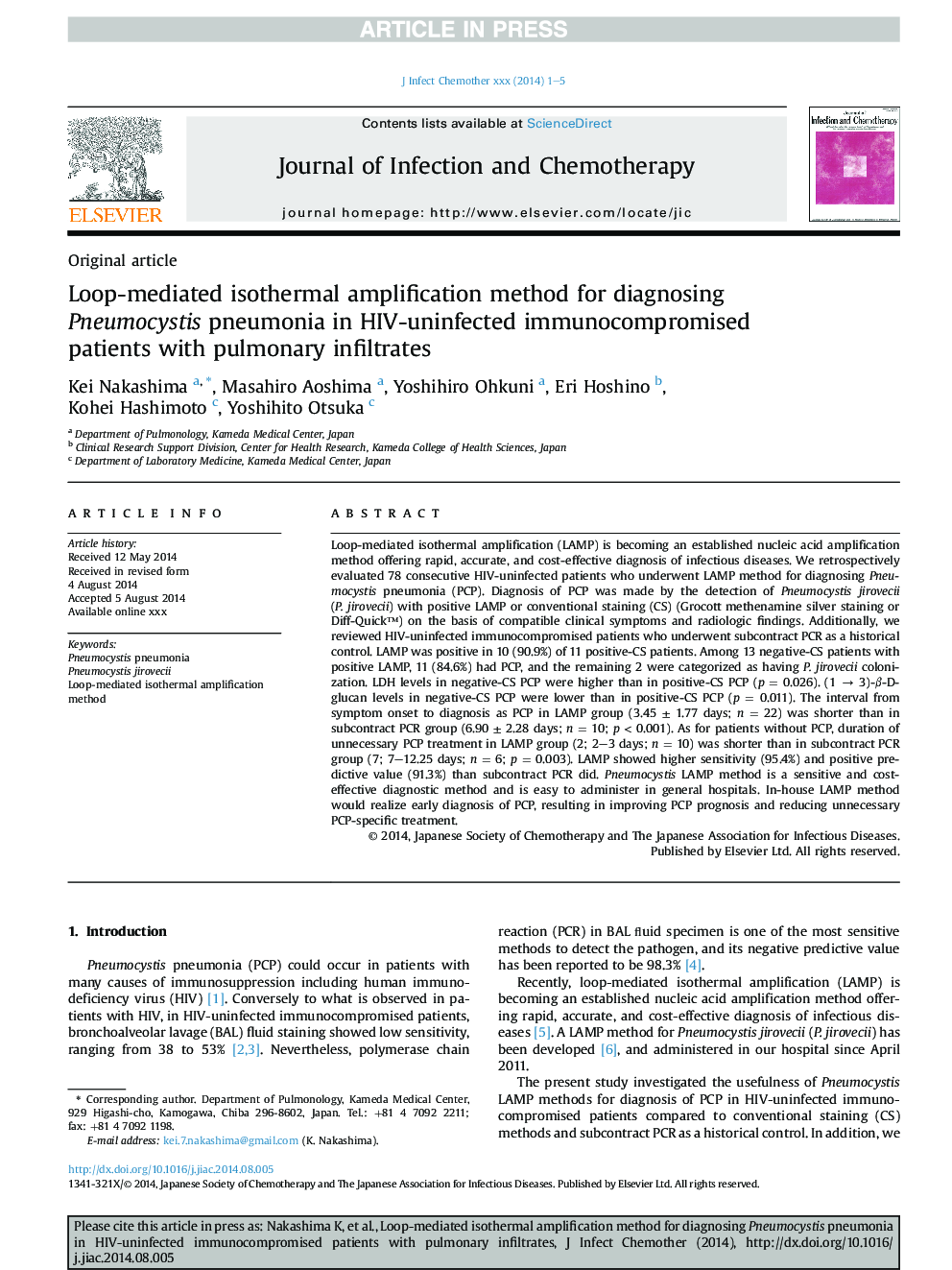| Article ID | Journal | Published Year | Pages | File Type |
|---|---|---|---|---|
| 6123608 | Journal of Infection and Chemotherapy | 2014 | 5 Pages |
Abstract
Loop-mediated isothermal ampliï¬cation (LAMP) is becoming an established nucleic acid ampliï¬cation method offering rapid, accurate, and cost-effective diagnosis of infectious diseases. We retrospectively evaluated 78 consecutive HIV-uninfected patients who underwent LAMP method for diagnosing Pneumocystis pneumonia (PCP). Diagnosis of PCP was made by the detection of Pneumocystis jirovecii (P. jirovecii) with positive LAMP or conventional staining (CS) (Grocott methenamine silver staining or Diff-Quickâ¢) on the basis of compatible clinical symptoms and radiologic findings. Additionally, we reviewed HIV-uninfected immunocompromised patients who underwent subcontract PCR as a historical control. LAMP was positive in 10 (90.9%) of 11 positive-CS patients. Among 13 negative-CS patients with positive LAMP, 11 (84.6%) had PCP, and the remaining 2 were categorized as having P. jirovecii colonization. LDH levels in negative-CS PCP were higher than in positive-CS PCP (p = 0.026). (1 â 3)-β-D-glucan levels in negative-CS PCP were lower than in positive-CS PCP (p = 0.011). The interval from symptom onset to diagnosis as PCP in LAMP group (3.45 ± 1.77 days; n = 22) was shorter than in subcontract PCR group (6.90 ± 2.28 days; n = 10; p < 0.001). As for patients without PCP, duration of unnecessary PCP treatment in LAMP group (2; 2-3 days; n = 10) was shorter than in subcontract PCR group (7; 7-12.25 days; n = 6; p = 0.003). LAMP showed higher sensitivity (95.4%) and positive predictive value (91.3%) than subcontract PCR did. Pneumocystis LAMP method is a sensitive and cost-effective diagnostic method and is easy to administer in general hospitals. In-house LAMP method would realize early diagnosis of PCP, resulting in improving PCP prognosis and reducing unnecessary PCP-specific treatment.
Related Topics
Life Sciences
Immunology and Microbiology
Applied Microbiology and Biotechnology
Authors
Kei Nakashima, Masahiro Aoshima, Yoshihiro Ohkuni, Eri Hoshino, Kohei Hashimoto, Yoshihito Otsuka,
